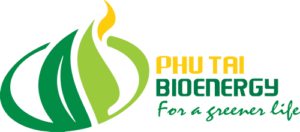The timber is a Heavy Hardwood with a density of755-1250 kg/m3 air dry. Keranji is classified as moderately durable
Other name: Xoay
The Standard Malaysian Name for the timber ofDialium spp. (Leguminosae). Vernacular names applied include keranji (Peninsular Malaysia, Sabah and Sarawak) with various epithets. Major species include D. indum, D. platysepalum, D. procerum and D. kunstleri. The sapwood is white to yellowish white, becomes light brown on exposure and is very distinct from the heartwood, which is golden brown or red-brown and darkens on exposure.
Also known as Kayi-khao and Yi-thongbung (Thailand); Kedjongong, Kerandji, Kerandji asap, Keranji and Nyamut(Indonesia); Keranji (Brunei); Kheng and Mai kheem pheep(Laos); Khleng (Thailand); Kralanh and Kralanh lomie (Cambodia); Taung-kaye (Myanmar); Xoay (Vietnam).
AIR DRYING
The timber seasons fairly slowly with slight degrade, like cupping, bowing, twisting, splitting, surface-checking as well as insect and fungal attacks on the sapwood. The timber is also moderately prone to end-checking. 13 mm thick boards take approximately 2 months to air dry, while 38 mm thick boards take 6 months.
KILN-DRYING
Kiln Schedule E is recommended. The timber is prone to surface-checking and end-splitting. 25 mm thick boards take approximately 10 days to kiln-dry from 50 to 10% moisture content.
Kiln Schedule E
|
Moisture Content (%) |
Temperature (Dry-bulb) |
Temperature (Wet-bulb) |
Relative Humidity (%) (approx.) |
||
|
° F |
° C |
° F |
° C |
||
|
Green |
120 |
48.5 |
115 |
46.0 |
85 |
|
60 |
120 |
48.5 |
113 |
45.0 |
80 |
|
40 |
125 |
51.5 |
116 |
46.5 |
75 |
|
30 |
130 |
54.5 |
117 |
47.0 |
65 |
|
25 |
140 |
60.0 |
120 |
49.0 |
55 |
|
20 |
155 |
68.0 |
127 |
53.0 |
45 |
|
15 |
170 |
76.5 |
136 |
58.0 |
40 |
SHRINKAGE
Shrinkage is variable, depending on species. D. platysepalum shows high shrinkage with radial shrinkage averages 2.3% and tangential shrinkage averages 3.7%.D. wallichii shows rather low shrinkage in that radial shrinkage averages only 1% and tangential shrinkage averages 1.7%.





























